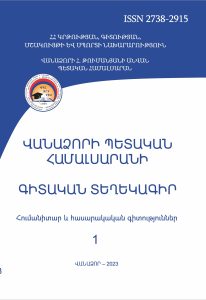Grouping Economies Based on Digitalisation Performance
Scientific Proceedings of Vanadzor State University Humanitarian and Social Sciences (ISSN 2738-2915)
2023 vol 1
Grouping Economies Based on Digitalisation Performancevia Candecomp/Parafac Model and Cluster Analysis
Hrachya Zakaryan
Summary
 Key words: digital economy, Republic of Armenia, three-dimensional data set, extraction of latent components, agglomerative hierarchical clustering, k-means clustering
Key words: digital economy, Republic of Armenia, three-dimensional data set, extraction of latent components, agglomerative hierarchical clustering, k-means clustering
Digital transformation and interconnected processes cause many urgent issues, making it important to reorganize public policy implementation. National economies become more interconnected, which means that it is necessary to examine the possible connections between them and realise the main drivers of current realities. Such results are more valuable in the context of digitalisation.
In this research, cluster analysis for 25 countries is conducted using 6 digital economy indicators, based on their percentage change values for 10 years. The aims of the research are to find the way those economies are grouped, as well as the driving forces of such a division. The scientific novelty is the usage of the Candecomp/Parafac model, as a three-dimensional data set is used. After the extraction of latent components, agglomerative hierarchical and the k-means clustering algorithms are used, based on the country mode values.
In order to implement policies that promote the development of the digital economy in the Republic of Armenia, it is crucial to study how the countries included in the same cluster as Armenia make it homogeneous, what are the common problems and the best practices of solving them. Further research might shed light on the processes that influence the phenomena, considered as latent indicators of digital transformation.
